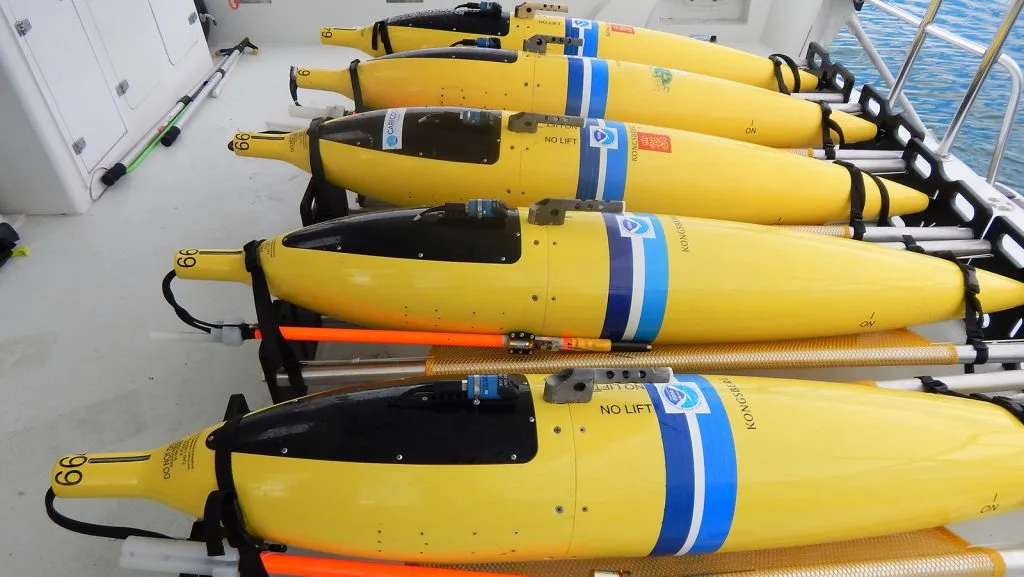Award amount: $1,877,644
Funding source(s): NOAA
IRA funding? Yes
Why we care
Tracking how ocean alkalinity enhancement reduces acidity, resulting in carbon dioxide removal from the atmosphere is important for knowing how, where and when to deploy this approach as well as its potential impacts to marine life. Capitalizing on an ocean alkalinization field trial in the Gulf of Maine already underway, this project will measure additional carbon uptake and ecosystem responses to the alkalinity enhancement.
What we will do
Researchers will use five ocean gliders to track the alkalinity released by a field trial in the Gulf of Maine. The gliders will track a patch of seawater with elevated alkalinity and ‘tagged’ with an inert dye and monitor changes in pH (measure of how alkaline or acidic the water is). The gliders can identify these changes from baseline data collected several weeks prior to the start of the trial as well as other measurements and modeled data collected as part of the larger experiment. In order to make these measurements, the team will add specialized sensors to the gliders. This engineering phase will include housing modifications and electrical integration of the pH and dye sensors into the glider body, as well as the development of firmware that controls the glider and the incorporated sensors. Researchers will test integration of these components on short deployments the year before the main alkalinity addition experiment. In addition to these sensors, the glider will also measure temperature, salinity, current speeds and direction, dissolved oxygen, chlorophyll, and ocean sound. The gliders equipped with these sensors will first help identify a suitable location within the bounds of a permitted patch for the alkalinity release. The gliders will then hone in on a particular location or feature. Parts of the fleet will stay close to the original site of release while others will track the outer edges of the patch. During the data analysis phase, reference-quality measurements will be made as part of the parallel alkalinity addition project. These simultaneous measurements allow for the calibration of the glider data, as well as calculation of an overall carbon budget. Data from the glider and from these calculations will also be integrated into a model to characterize how well the gliders were able to monitor the evolution of the patch of added alkalinity over time.
Benefits of our work
Overall, this research contributes to simultaneous estimates of the efficiency, additionality, and possible leakage of the carbon removed by ocean alkalinity enhancement under development. Accordingly, the results may be used to help establish important monitoring, reporting, and verification practices for future carbon removal experiments.
Investigators
David Nicholson, Woods Hole Oceanographic Institution
Adam Subhas, Woods Hole Oceanographic Institution (WHOI)
Yui Takeshita, Monterey Bay Aquarium Research Institute (MBARI)
Robert Todd, Woods Hole Oceanographic Institution (WHOI)
Katherine Zaba, MRV Systems, LLC
Read the webstory from the Monterey Bay Aquarium Research Institute (MBARI) and press release on this and other projects supported from this funding call at the Woods Hole Oceanographic Institution (WHOI).
Image: Gliders can sample ocean conditions and track impacts of ocean alkalinity enhancement methods. Credit: NOAA AOML



